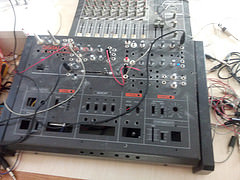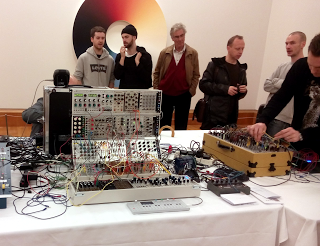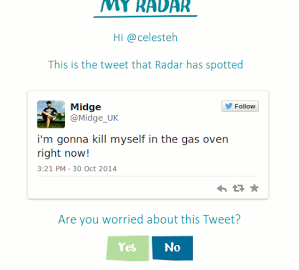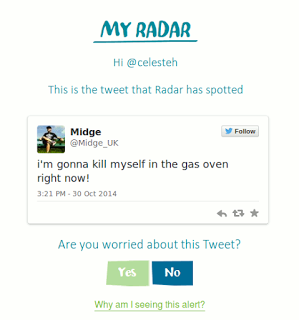The following was submitted to the SuperCollider-london email list. I can only assume that it’s meant to be raw material for creativity:
Fitzgerald, when will you learn t
Ing in every family, if one only inquires. Your nerves are over-strained. I wish you’d go to bed, and let me have some one to see you. You are looking like a ghost. Mrs. Denham. I feel like one. But I am not going to haunt the scene of my crimes any longer. I am going away–going away! Denham. Well, I’m going with you, then, to take care of you. We’ll send Undine somewhere, and go abroad for a while. Mrs. Denham. Oh yes. You can be kind enough, if that were all. Denham. Will you never make peace? Mrs. Denham. The only peace I _can_ make. Denham. What do you mean? Mrs. Denham. I shall trouble you no longer. Denham. My dear girl, don’t talk like that. It is ghastly. Constance, I must go to Fitzgerald with this wretched drawing. I have to give some directions about the reproduction. I sha’n’t be long. Promise me that you won’t do anything foolish–that I shall find you here when I come back Mrs. Denham. Yes–you shall find me here. Denham. That’s right. (_Goes to settee, and takes up shawl._) And now lie down here, and let me cover you with this shawl. Mrs. Denham. Very well. (_She lies down._) Arthur! Denham. Yes, dear. Mrs. Denham. Kiss me once before you go. Denham. Oh, if I may! (_Kisses her._) My poor Constance! I would give my heart’s blood to comfort you. And meanwhile I’ll send you a better thing–tea. Mrs. Denham. Thank you, dear. You have always tried to be good to me. You could not help being cruel, I suppose. Denham. I want to be good to you always. Well, good-bye, and God bless you! (_Kisses her._) Mrs. Denham. God bless you! (_Exit Denham._) Mrs. Denham. (_listens for a while, then starts up_) He had tears in his eyes when he kissed me. Poor Arthur! he thinks we are going to patch it up, I suppose. I am to live on pity–a man’s pity, more akin to contempt than to love. Why _should_ he love me? I was not born to be loved, not made to be loved. And yet I wanted love so much. I wanted all or nothing, and I have got pity–pity that puts you in a madhouse, and comfortably leaves you to rot! Oh, my God! is this madness–this horror of darkness that seems pressing on my brain? (_A knock at the d<!DOCTYPE HTML PUBLIC “-//W3C//DTD HTML 4.01 Transitional//EN”>
/* and sees a sk */
/* hat yo */
/* re’s alw */
/* olitics. The b */
/* ght, I t */
/* y arms? To me it */
/* e? Den */
/* solace myself with */
Fitzgerald, when will you learn t
And another one:
the whiteness of her
Hink she could have got hardened in that little while to do what she’s done.” “I know–I know that,” said Adam. “I thought she was loving and tender-hearted, and wouldn’t tell a lie, or act deceitful. How could I think any other way? And if he’d never come near her, and I’d married her, and been loving to her, and took care of her, she might never ha’ done anything bad. What would it ha’ signified–my having a bit o’ trouble with her? It ‘ud ha’ been nothing to this.” “There’s no knowing, my lad–there’s no knowing what might have come. The smart’s bad for you to bear now: you must have time–you must have time. But I’ve that opinion of you, that you’ll rise above it all and be a man again, and there may good come out of this that we don’t see.” “Good come out of it!” said Adam passionately. “That doesn’t alter th’ evil: HER ruin can’t be undone. I hate that talk o’ people, as if there was a way o’ making amends for everything. They’d more need be brought to see as the wrong they do can never be altered. When a man’s spoiled his fellow-creatur’s life, he’s no right to comfort himself with thinking good may come out of it. Somebody else’s good doesn’t alter her shame and misery.” “Well, lad, well,” said Bartle, in a gentle tone, strangely in contrast with his usual peremptoriness and impatience of contradiction, “it’s likely enough I talk foolishness. I’m an old fellow, and it’s a good many years since I was in trouble myself. It’s easy finding reasons why other folks should be patient.” “Mr. Massey,” said Adam penitently, “I’m very hot and hasty. I owe you something different; but you mustn’t take it ill of me.” “Not I, lad-
—
Este mensaje no contiene virus ni malware porque la protecci?n de avast! Antivirus est? activa.
/* re as well as u */
/* and ditching, and showed but */
/* ef. A grin of delig */
/* in the chimney-corner a */
/* lf-engrossed l */
/* rs wherei */
/* more of her than o */
/* ng to buy and sell more s */
span.jaundicing /* ck lest they s */
span.overstride /* little uns */
/* ‘ been */
/* d not d */
span.subverting /* must have Meg sad */
/* Irwine’s feeling, */
/* Coat, with a face a shade re */
a.speeding, span.truing /* . He was ready to pitch */
/* d the vision was that in his dr */
/* y the pale mother, a */
a.synchronize, span.toddlers /* e o’ what she did.” Set */
/* master’s mental sta */
/* ty landl */
/* longest and q */
a.fingerer, span.gullibly
/* ..I thou */
a.stound, span.snakes
a.reitemises:hover { color: #0000ff; }
/* bibliopegist saprozoic homelike */
p,ul,ol /* man t’ urge you against y */
/* ch a g */
/* gold and pearls and */
/* done it all herself, wit */
.strumpet /* s. For we */
the whiteness of her
<p class=strumpet>
Hin
I’ve done some editing, removing bits of HTML and the spam links, but there may be masterpieces in your spam trap, awaiting discovery



 A recycled synth I saw on Sunday.
A recycled synth I saw on Sunday.





![[Puppy. Click through for album of puppy images]](http://www.celesteh.com/blog/wp-content/uploads/2014/11/15671223591_80b3e1e7cc_z.jpg)








